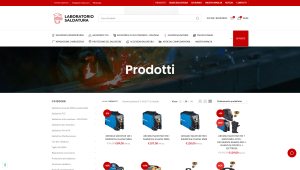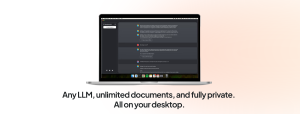The Key to Effective Landing Pages: Skills, Objectives, and Design
In the vast digital world, landing pages have rapidly gained a central role in marketing and conversion strategies. However, their effectiveness is not guaranteed by their mere creation. Technical skills, clear objectives, and intuitive design are needed to combine the message with the visual aspect. Our 10 steps provide a guide on how to transform a company page into a powerful conversion tool. Covering tactics, technical aspects, SEO optimization, these practices will help you create an effective landing page.
What is a Landing Page?
The landing page is crucial for conversion strategy, more than just a simple landing page. It is a sophisticated mechanism that captures, guides, and converts interested users. It acts as an interface between potential customers and the offer, whether products, services, or content. Its effectiveness lies in directing leads towards a well-defined action, with a persuasive Call-to-Action, targeted content, and optimized design. Integration between back-end and front-end, SEO optimization, and understanding the audience’s psychology are essential. Unlike traditional web pages, a landing page focuses on a single objective, with a design based on advanced User Experience principles for a memorable experience. It is a key element for success in conversion.

10 Steps to Create Perfect Landing Pages
The Critical Importance of an Optimized Landing Page
A landing page is much more than a simple company page; it represents a crucial entry point for influencing user decisions. Every detail is significant: from colors and images that evoke positive emotions, to the structure of the content that guides the visitor along a well-defined path, to the strategic placement of the Call-to-Action (CTA) that prompts action. This meticulous attention is essential because users decide in just a few seconds whether to stay or leave the page, whether to trust or look elsewhere. An optimized and well-designed landing page communicates professionalism, authenticity, and clarity, essential for establishing a trust relationship. Moreover, it reduces the bounce rate and prolongs user engagement, increasing the chances of conversion.
Audience Analysis: The Key to a Successful Landing Page
Design and UX on the Landing Page
A valuable landing page requires impeccable design rooted in User Experience (UX) principles to create an optimal path for the visitor. Every aspect of the page, from the arrangement of images to typographic hierarchy, plays a crucial role in guiding user behavior. Intuitive graphics leverage visual psychology to highlight key messages, removing distractions and simplifying the decision-making process. UX goes beyond simple navigability, encompassing a deep analysis of the user’s journey and optimizing every step to reduce friction and uncertainty, including micro interactions, visual feedback, and clear information structure. An often-overlooked aspect is adaptability, as the landing page must respond to various device sizes and capabilities. Finally, the harmonious integration of design and UX creates a symbiosis where aesthetics and functionality converge to offer an exceptional user experience.
Engaging Title: The Perfect Start for Your Landing Page
The title of a landing page is often underestimated, yet it plays a crucial role in directing user action. It functions like a beacon, drawing attention and indicating the action to be taken. Therefore, it’s essential to create a captivating title that balances clarity, curiosity, and relevance. It should clearly communicate the offer or value, avoiding ambiguity, while also stimulating curiosity and sparking interest, inviting visitors to learn more. The title must stay true to the brand’s essence and the page’s goal, maintaining consistency with the company’s tone of voice. SEO optimization of the title ensures that the landing page is easily discoverable, merging content and visibility. A well-conceived title is a critical element for the success of every landing page.
Content Marketing: The Key to a Successful and Effective Landing Page
Even today, content continues to reign supreme. Especially within a landing page, content marketing takes on a primary role, serving as the main medium of communication between the brand and its audience. It’s not just about filling space, but about creating texts that capture, inform, and, most importantly, drive conversion. The key to effective content lies in its relevance: it must go beyond mere filling and offer concrete value to the user.
Whether it’s solving specific problems, answering fundamental questions, or stimulating interest, the content must be centered on the needs and expectations of the audience. Its presentation, from formatting to word choice, must be impeccable. Well-written, structured, and presented content enhances the potential customer’s experience on the landing page, encouraging staying, interacting, and, hopefully, the desired action.
Effective Calls to Action for Optimized Landing Pages
The Call-to-Action (CTA) represents the point of convergence between intention and action within a landing page. This powerful combination of design, text, and placement is crafted to direct users towards a specific action, such as subscribing to a newsletter, purchasing a product, or requesting more information. While the content of the landing page informs and engages, it is the CTA that triggers action. Best practices suggest the use of clear and direct words that convey urgency and value. Phrases like “Discover More” are immediate and promising. However, words alone are not enough; the CTA must also stand out graphically, integrating with the overall aesthetics of the page. The positioning of the call to action is equally crucial: it must be visible but not intrusive, guiding the user naturally. Finally, the continuous refinement of the CTA, closely monitoring its performance, is essential.
Create Effective Forms to Maximize Conversions
One of the most impactful elements on conversions within a landing page is the form users are required to fill out. Even if the page is visually appealing and offers high-value content, a form that’s too long or complicated can compromise conversion potential. Industry experts know that each additional field increases the likelihood of abandonment, so brevity is key.
However, reducing the number of fields isn’t the only important aspect; it’s crucial to ensure that each field is indispensable and directly contributes to the goal of the landing page. Focus is equally essential: if a company is seeking qualified leads, each field should reflect this intention, avoiding unnecessary questions. The goal is to simplify the user’s experience as much as possible, smoothly guiding them towards the desired action.
SEO Optimization to Maximize Your Landing Page's Visibility
Even the most sophisticated landing page risks obscurity without proper search engine optimization (SEO). An effective SEO strategy must include an impeccable user experience: page loading speed, smooth navigation, and high-quality content not only influence visitor satisfaction but also affect search engine rankings, such as on Google. Recent developments in SEO have highlighted the importance of metrics like Largest Concertful Paint (loading time of the main content) or Cumulative Layout Shift (visual stability of the page). Integrating these metrics into your positioning strategy can make a significant difference. It’s also important to consider information architecture, the choice of an appropriate framework, and the implementation of structured data that enrich the experience. When managed correctly, these aspects make the landing page attractive to potential customers and ready to achieve a prominent position in search engine results.
Maximizing Your Landing Page's Loading Speed
As we have seen, in the complex landscape of web marketing, the loading time of a landing page is of crucial importance. Every fraction of a second counts, and this is not an exaggeration. Various statistics indicate that even a brief one-second delay in loading speed can reduce conversions by up to 7%. For businesses, this translates into missed opportunities and potential financial losses.
How can optimal speeds be achieved? Through image compression, minimizing CSS and JavaScript, and using Content Delivery Networks (CDN), tricks that ensure a significant improvement in performance. Integrating an advanced caching strategy or adopting technologies like Accelerated Mobile Pages (AMP) can further reduce waiting times for users. In a digital ecosystem where no one has time to waste, a high-performing landing page represents an invaluable advantage.
Mobile-First Optimization: Ensuring an Excellent User Experience
Today, most online interactions occur through mobile devices, with over 50% of web access happening via smartphones and tablets. Ignoring this reality means not only losing a vast portion of potential traffic but also risking the authority and reputation of your brand online. A successful landing page must be responsive, adapting seamlessly to different screen sizes to ensure an optimal user experience on any device. Responsiveness is not just about aesthetics but also affects loading speed, interactivity, and ease of navigation. Search engines, including Google, reward mobile-optimized pages with better positioning. Therefore, dedicating resources and expertise to mobile optimization of your landing page is crucial for success.
Creating effective landing pages requires creativity, technical skills, and in-depth analysis. Every element, from content to design, metrics to testing, contributes to the success of the campaign. The 10 steps for building high-quality landing pages are adaptable to the needs of the audience and the market. Although the strategy for landing pages is constantly evolving, attention to detail, precision, and value offered to visitors will always remain fundamental for attracting and converting new loyal customers.







